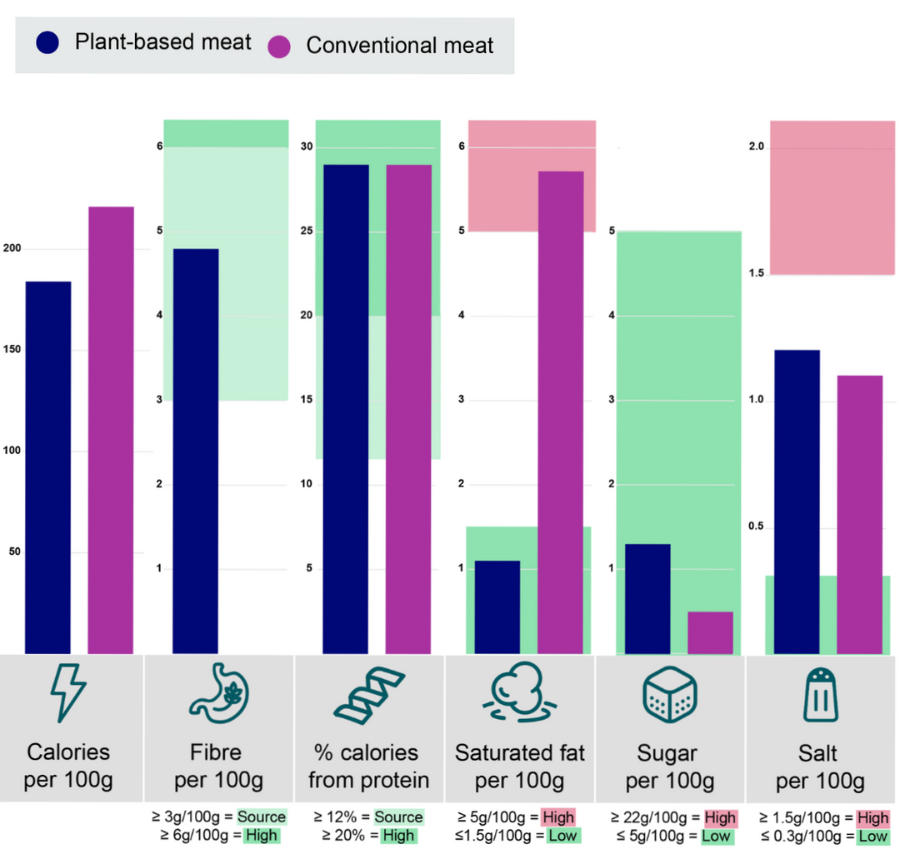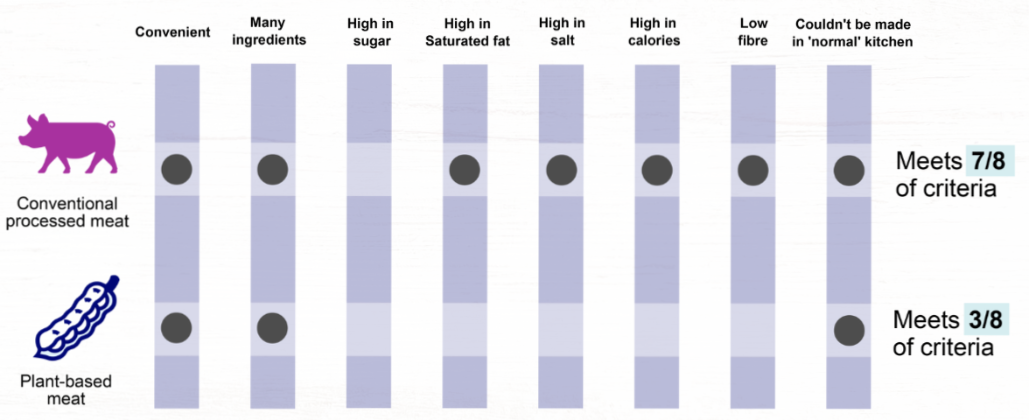Unpacking the Evidence on Ultra-Processed Foods & Plant-Based Meat: A Summary for Healthcare Professionals
Adapted from the full UPF Guide (Where Does Plant-Based Meat Fit in the Ultra-Processed Food Conversation?) co-authored by Amy Williams (GFI Europe), Dr Roberta Alessandrini (PAN International), and Dr Johanneke Tummers (PAN International & School for Moral Ambition)
There is a common perception that all Ultra-Processed Foods (UPFs) are linked to poor health outcomes and should therefore be excluded from diets. However, not all UPFs are alike. Plant-based meat alternatives are a key example of this complexity.
Key Definitions:
• Ultra-Processed Foods (UPFs): Defined by the Nova framework as industrially produced foods with multiple ingredients and processing steps. The classification is based on degree of processing rather than nutritional quality.
• Plant-Based Meat: Designed to replicate the taste and texture of animal meat using plant-derived ingredients, often categorised as UPF despite differing substantially in nutritional profile.
Why this Research Matters:
Research on UPFs is epidemiological, exploring the health outcomes associated with dietary patterns high in conventional UPFs—such as sugary drinks and processed meats—which are typically high in calories and low in nutrients.
Plant-based meat, however is generally:
• High in protein
• A source of dietary fibre
• Low in saturated fat and sugar
This contrasts with many typical UPFs and even with conventional processed meats, which plant-based meats are often designed to replace.
Graph showing the nutritional profile of plant-based meat
What the Evidence Says:
Randomised controlled trials (RCTs) and systematic reviews suggest:
• Improved blood lipid profiles, particularly reductions in LDL cholesterol
• Weight loss and improved gut health
These benefits are likely largely due to higher fibre intake and reduced saturated fat when replacing processed meat with plant-based alternatives.
Practical Implications for Healthcare Professionals:
• Be critical of broad UPF labels: Nutritional quality should guide recommendations, not processing alone.
• Support informed patient choices: Plant-based meat can be a helpful tool for patients reducing red or processed meat intake.
• Balance is key: Encourage a diverse diet based primarily on a range of whole plant-foods, but recognise some patients may find foods like plant-based meat useful to make these broader dietary shifts easier to adopt and maintain.
Image showing the comparison between Conventional Processed Meat and Plant-Based Meat
Cautions and Considerations:
• There is a wide variation in the nutritional composition of different plant-based products. Fortification with essential nutrients is still inconsistent and some products are high in salt.
• While the key ingredients such as textured vegetable protein and mycoprotein have been eaten for many decades and are generally well understood, long-term studies and research in diverse populations are still needed to understand whether observed benefits persist over longer time periods and apply equally across demographic groups.
The Bottom Line:
Not all UPFs are created equal. Plant-based meats may offer tangible health benefits when used to replace conventional processed meats. Healthcare professionals can play a pivotal role in helping patients navigate food choices based on science—not stigma.
About the Guide Authors:
Both GFI Europe and PAN International are independent non-profit organisations advocating for health, sustainability, and evidence-led food system transformation.
Access the full guide here.
Notes:
The World Health Organization (WHO)’s International Agency for Research on Cancer (IARC) states that consumption of processed meat is “carcinogenic to humans (Group I ),” and that consumption of red meat is “probably carcinogenic to humans (Group 2A). Find the 2015 citation here.


